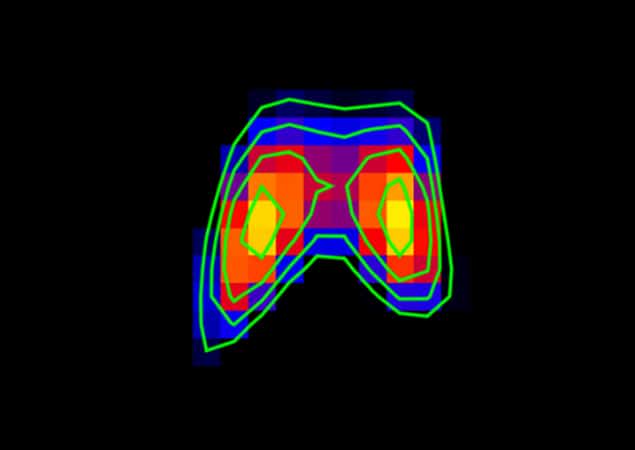
A pair of supermassive black holes (SMBHs) could be orbiting each other in a galaxy that is 400 million light-years from Earth – according to astronomers in India and the US. The binary system appears to have a combined mass of about 40 million Suns and the black holes are separated by just over one light-year. The observation appears to back up a theoretical prediction linking galactic radio emissions to the presence of a binary SMBH.
Today there is only one confirmed sighting of a binary SMBH, in a radio galaxy called 0402+379. This object is 750 million light-years away and the two SMBHs have a combined mass of 15 billion Suns and are separated by about 24 light-years.
Compact and closer
Now, Preeti Kharb and Dharam Lal at the National Centre for Radio Astrophysics in Pune and David Merritt at the Rochester Institute of Technology have identified a possible second binary SMBH that is more compact and closer to Earth. It is in the Seyfert spiral galaxy NGC 7674 and was studied using the Very Long Baseline Array (VLBA) of radio telescopes in the US.
The exceptionally good angular resolution of the VLBA allowed the trio to identify two compact sources of intense radio waves at the centre of NGC 7674. “The two radio sources have properties that are known to be associated with massive black holes that are accreting gas,” explains Kharb.
Gravitational waves
Calculations suggest that the binary has an orbital period of about 100,000 years. While it will be broadcasting gravitational waves, they are far too low in frequency to be seen by existing or planned detectors. Writing in Nature Astronomy, the trio point out that such objects would contribute to the gravitational-wave background signal that is expected to permeate the cosmos.
Merritt points out that NGC 7674 is a “Z-shaped” radio source, which refers to the twisted shape of the galaxy’s radio emissions. This peculiar structure is thought to form in the aftermath of the merger of two galaxies, each containing a SMBH. “Detection of a binary supermassive black hole in this galaxy also confirms a theoretical prediction that such binaries should be present in so-called Z-shaped radio sources,” says Merritt.
Binary SMBHs are thought to exist at the heart of some elliptical galaxies that formed by the merger of two large spiral galaxies – each galaxy bringing its own SMBH. In contrast, Seyfert galaxy formation is not believed to involve the merger of large galaxies. Seyferts are therefore not expected to harbour binary SMBHs, making this latest observation a surprising one.



